Fruit & Seed Oatcakes Recipe
Fruit & Seed Oatcakes are a lightly sweet version of classic Scottish oatcakes. Healthy oats are joined by nutritious seeds for a toasty, nutty flavour. Sweetness is brought by currants and less than half a teaspoon of sugar per biscuit.

Perfect when you want quick boost of energy combined with the slow-release goodness of oats, the crispy oatcakes make a perfect snack at any time. Made with everyday ingredients, I think you’ll be surprised at just how good they taste.
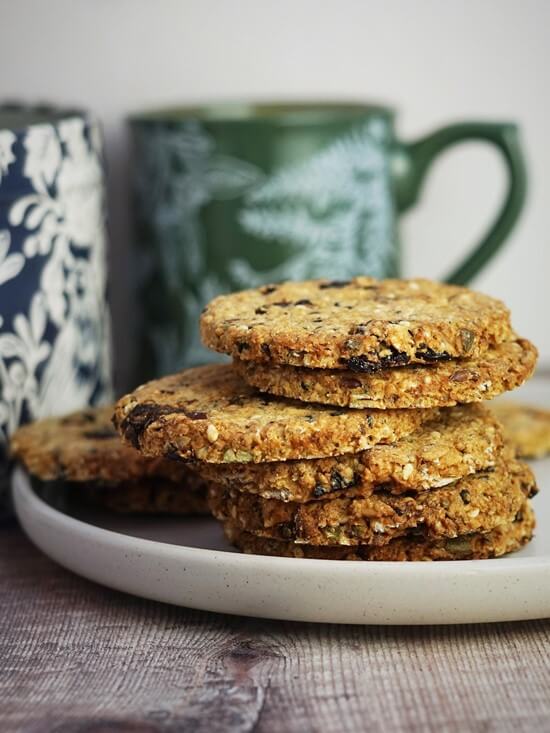
Jump to Recipe
The fact that I love Scottish oatcakes should be pretty obvious when you realise that this is my FIFTH recipe for them!
First came my classic Scottish Oatcakes: just oats, salt, oil (or butter), and boiling water. After perfecting those, I posted three flavoured versions. Cheesy, Seeded, and Walnut & Pumpkin Seed Oatcakes.
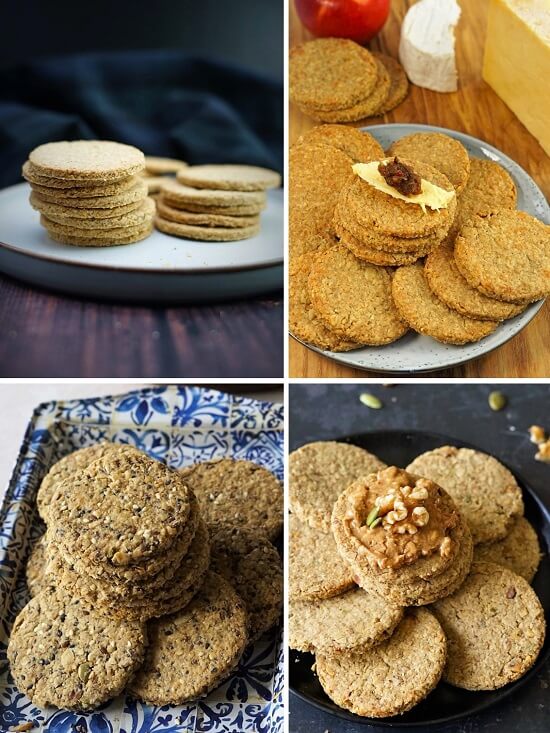
But what they all had in common was that they were savoury. As Scottish oatcakes are most often eaten as an accompaniment to cheese and sometimes soup, pâté, nut butters, or dips like hummus, why wouldn’t they be?
But I love oats in sweet dishes too. Just a sample of these recipes are Baked Oat Pudding with Apple & Cinnamon, Ginger Oat Biscuits, Zesty Oat Biscuits and, most popular of all, Homemade Digestive Biscuits (including a heavenly chocolate covered version)
So, naturally, my thoughts eventually turned to creating a sweet Scottish oatcake.
FRUIT & SEED OATCAKES
I thought I’d been quite clever in coming up with the idea of a Scottish oatcake that would satisfy a desire for something a little sweet while also being packed with nutritious ingredients.
So I admit I was a bit miffed to discover that a well-known brand of oatcake already made a fruit and seed version! Not that I’d consider buying them, mind you. Containing environmentally disastrous palm oil (I don’t care if they do claim it’s ‘sustainable’), only one type of seed and more sugar than I’d want in mine, I knew that homemade would be so much better.
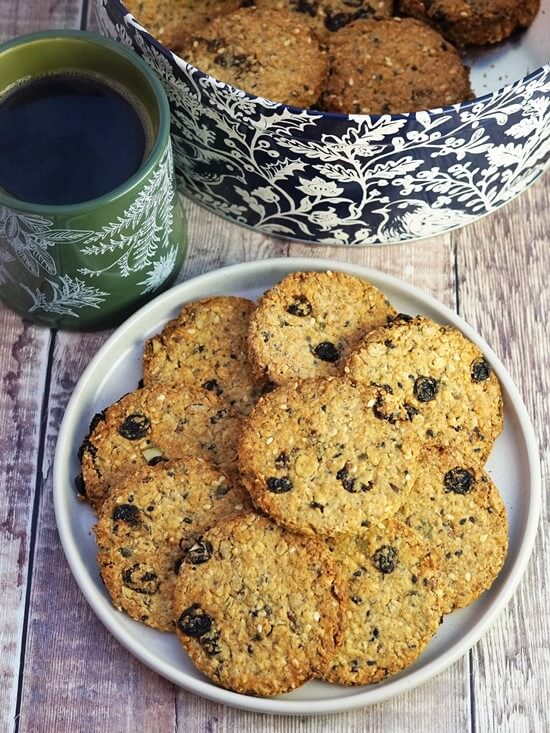
All I needed to do was tweak my Scottish oatcake base recipe and the job was done. And I was hugely pleased with the result.
INGREDIENTS FOR FRUIT & SEED OATCAKES
I think one of the many great things about homemade oatcakes is that you’ll probably already have all the ingredients you need at home. My Fruit & Seed Oatcakes are no different, requiring just a handful of kitchen staples.
OATS
Surprise, surprise, the main ingredient in oatcakes is oats! The oats you buy for cooking your morning porridge are fine for making oatcakes. Here in the UK, they’re labelled rolled (sometimes jumbo), or porridge oats. Rolled are larger and less flaky than porridge oats and will give you a coarser, more rustic oatcake.
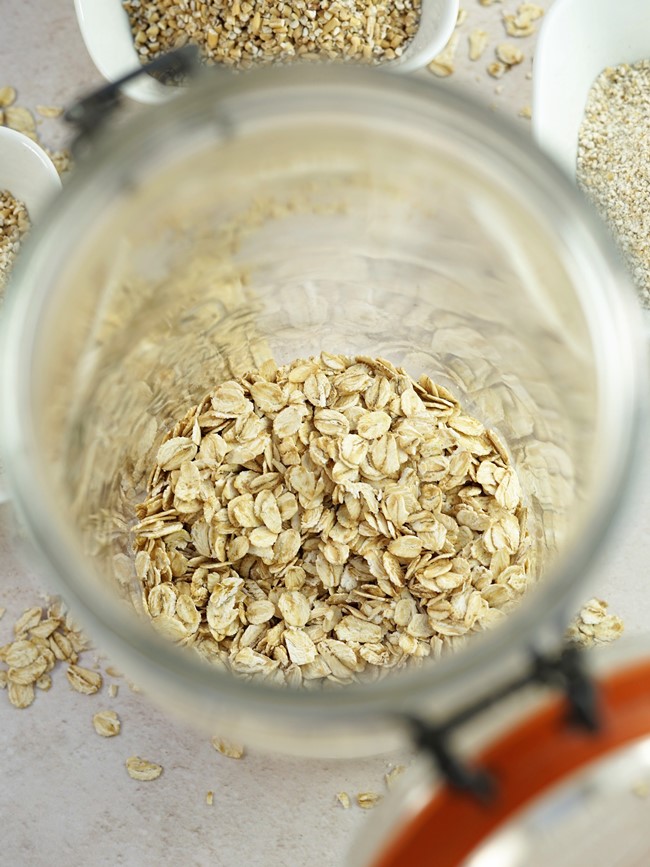
OATMEAL
Alongside the oats, I include the same quantity of oatmeal. Here in Britain, oatmeal is simply a flour that’s made from oats. Sold as fine, medium, or coarse, oatmeal is easier to find in wholefood shops than supermarkets. But not to worry if you can’t find it. Just make your own by whizzing up rolled or porridge oats in a blender or food processor.
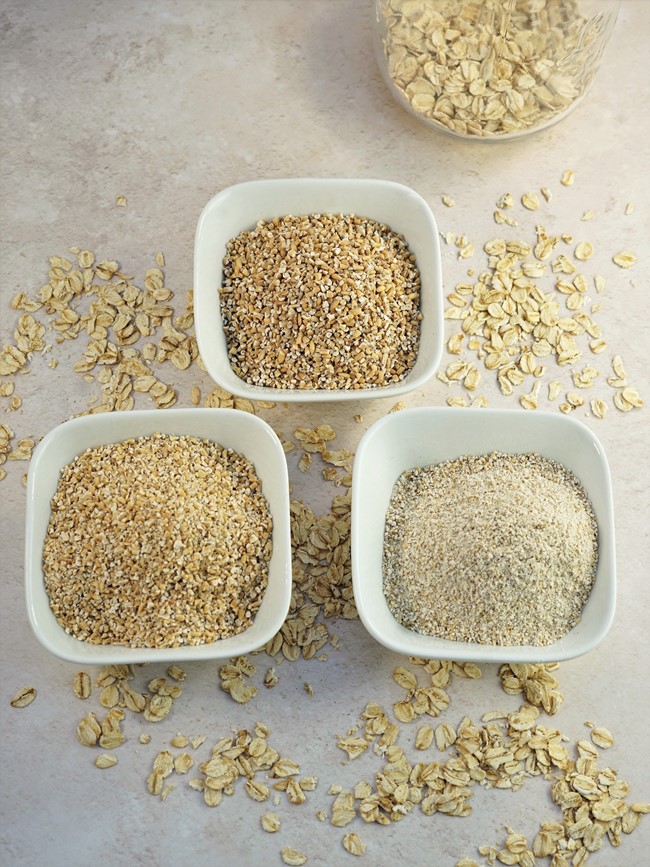
Because the other elements in my Fruit & Seed Oatcakes are quite chunky, I use fine oatmeal. This is so my dough holds together better.
SEEDS
I like a good mixture of seeds in my oatcakes and almost any combination should work.
I roughly chop bigger ones like pumpkin seeds so they’re less intrusive when cutting out. Because it’s thought that you get more nutritional benefits from some seeds when they’re ground (e.g. chia and flax), you can replace some of the whole seeds with ground if you prefer. For the oatcakes pictured in this post I used chopped pumpkin, whole sunflower, flax, black and white sesame, chia, hemp hearts, plus ground chia.

DRIED FRUIT
I love the extra little bursts of sweet flavour studded through the Fruit & Seed Oatcakes thanks to dried fruit. As with the seeds, you can include your favourites but chop up any larger ones e.g. dates or sultanas. To save this job I’ve used small currants. So that the fruit is plumper and doesn’t absorb lots of the liquid in the dough, I soak in boiling water while I gather the rest of the ingredients.
SUGAR & SALT
You’ll need ordinary caster sugar for very lightly sweetening the oatcakes. I use 50 grams per batch of 24. That works out at less than half a teaspoon of sugar per oatcake. If you have a sweeter tooth, then adding another 25 grams of sugar shouldn’t affect the recipe. Be aware that I haven’t tested the recipe with extra sugar though.
I almost always include a pinch of salt in my baking, even sweet ones, to improve the flavour.
OIL OR BUTTER
In all my Scottish oatcake recipes, I use oil or butter to help bind the dough and provide the correct texture. Although in my savoury oatcakes I tend to use oil, I prefer a light buttery-ness in sweetish Fruit & Seed Oatcakes.
If you’d rather use oil, I’ve successfully made oatcakes with olive, walnut and hemp oil. I see no reason why sunflower, pumpkin or flax oil wouldn’t work either.
BOILING WATER
Simple boiling water from a kettle helps to bring our dough together. Because different oats absorb different amounts of water, it’s not possible to be exact about the amount you’ll need. 100 – 120 ml is usually enough. But don’t be afraid to add extra: as much as needed to ensure the dough isn’t dry. Note that seeds such as flax and chia can absorb lots of water so including these in your mix might mean more boiling water will be needed.
WHOLEMEAL FLOUR
I roll out the dough on wholemeal flour. You could use extra oatmeal instead, but I find wholemeal flour works better as it’s less sticky. Due to the stickiness of oat dough, a silicone mat makes rolling out easier too.
If you’re ready to start baking, then Jump to Recipe. Or read on for step-by-step tips plus photos.
MAKING THE DOUGH & ROLLING OUT
To make the dough, I start by stirring together the oats, fine oatmeal, seeds, currants, sugar, and salt. Then, after making a well in the middle with my spoon, I pour in the melted butter or oil followed by 100 ml of the boiling water and quickly stir to bring everything together.
The dough should be soft and wettish at this point. If the dough looks at all dry you should add more water or you’ll find it almost impossible to roll out. On the other hand, you don’t want it too wet either.
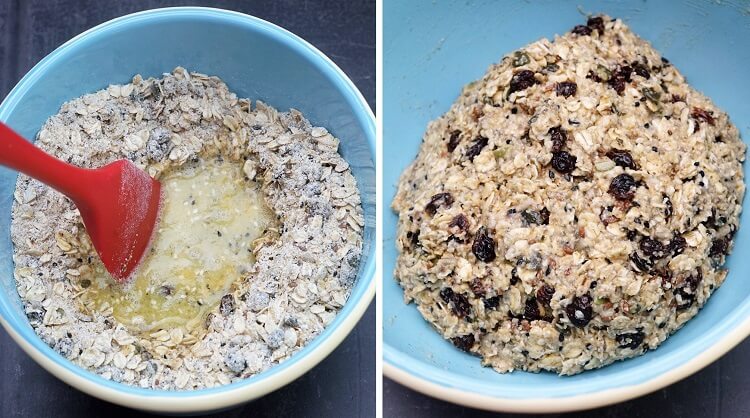
Start by dusting your work surface and a rolling pin with flour or oatmeal. Transfer the dough onto it and dust that too. To ensure the oatcakes cook all the way through and have the right crispness, roll out the dough no more than 3 – 5 mm thick. If you find the dough starts to come apart at the edges as you roll, just use your hands to push it back together and keep going.
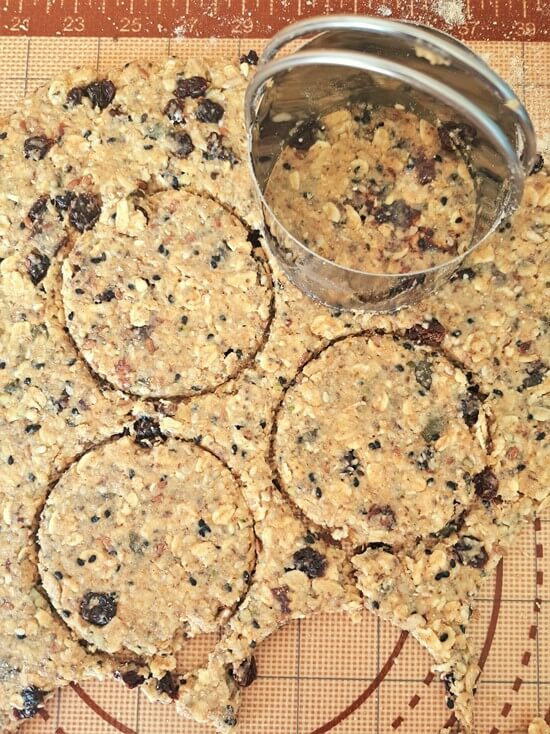
I use a 7 cm cutter, dipped in flour, to stamp out the oatcakes. As you cut them out, carefully (they’ll be quite soft) place the oatcakes on a paper-lined baking tray.
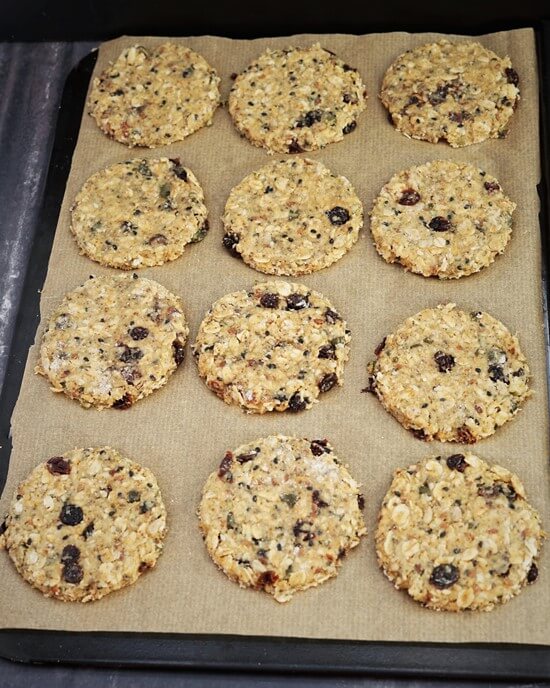
Depending on how much flour or oatmeal you’ve used to roll out, and how ‘thirsty’ your oats are, you may or may not need to add a splash more water to bring together the scraps to re-roll and make more oatcakes.
BAKING & STORING
In an oven preheated to 180 C / 160 Fan / gas 4, these oatcakes should take 20 – 25 minutes to get golden brown and baked all the way through. This is quicker than my other Scottish oatcakes, presumably due to the sugar. If you’ve rolled them a little thickly, they may take longer. I recommend you check after 10 minutes and turn the oven down if the oatcakes are browning too quickly. To get even cooking, I turn them over for the final few minutes.
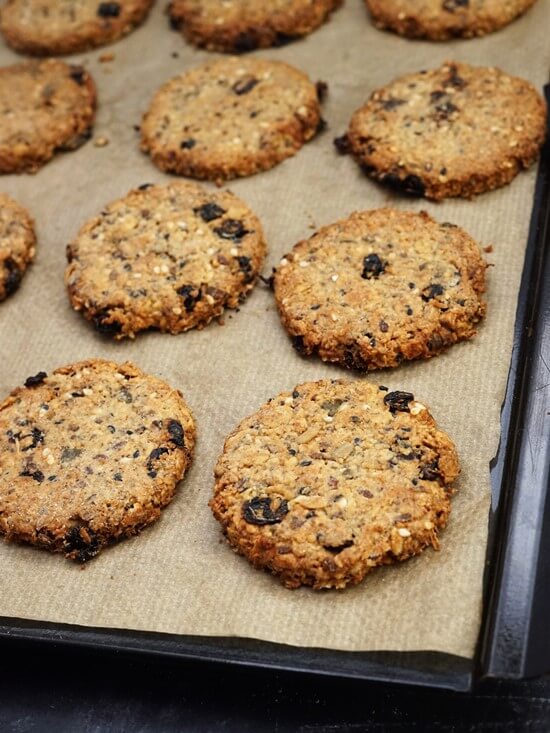
Once they’re done, transfer the oatcakes to a wire rack until completely cold. Then you can put them in an airtight container where they should keep for a good month.
NUTRITIOUS, LIGHTLY SWEET SNACK
Because Fruit & Seed Oatcakes combine the slow-release goodness of oats, plus a quick boost of energy, I think they’re a perfect snack. Healthy oats are complemented by nutritious seeds for a toasty, nutty flavour. A touch of sweetness in the crunchy biscuits comes from the dried fruit and a relatively small amount of sugar.
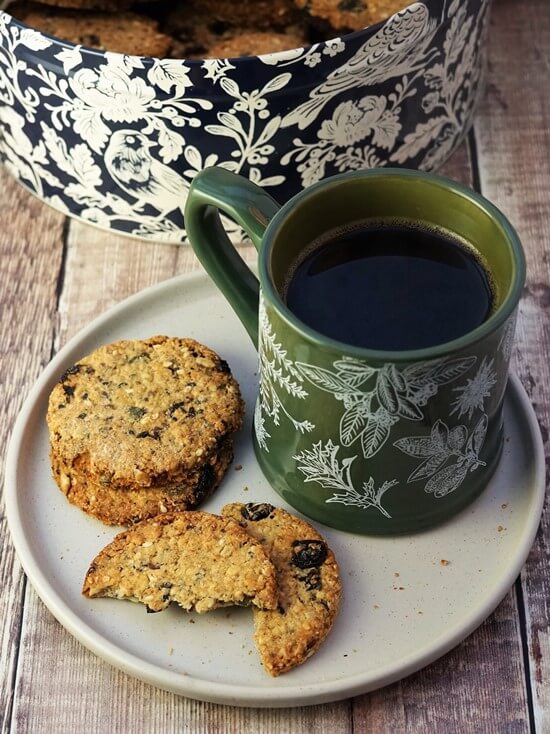
To me, they taste incredibly good, especially considering the humble ingredients. Try them with a cuppa or add to packed lunches for healthier sweet treat and I think you’ll agree.
Have you made this recipe? Please a comment and don’t forget to rate it.
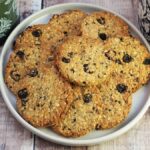
Fruit & Seed Oatcakes
A lightly sweet version of classic Scottish oatcakes with mixed seeds for a toasty, nutty flavour plus currants. A nutritious snack with the slow-release energy of oats. Great with a cuppa or in lunchboxes.
Ingredients
- boiling water from a kettle
- 75 g currants
- 140 g rolled oats or porridge oats
- 140 g fine oatmeal see Recipe Note 1 to make your own
- 75 g mixed seeds e.g. flax, chia, sunflower, sesame, pumpkin, hemp hearts. See Recipe Note 2
- 50 g caster sugar
- ½ tsp salt
- 75 ml oil (OR 75g of butter, melted) e.g. hemp, pumpkin seed, olive, or sunflower oil
- wholemeal flour (for rolling out) see Recipe Note 3
Instructions
-
Put the currants in a heatproof bowl and cover with boiling water. Set aside to soak and plump up.
-
Preheat the oven to 180C/160C Fan/Gas 4.
Line 2 baking trays with baking parchment or greaseproof paper.
-
Drain the currants.
In a mixing bowl, stir together the oats, oatmeal, seeds, currants, sugar, and salt.
Make a well in the centre then pour in the oil (or melted butter) plus 100ml of boiling water.
Stir quickly to bring the mixture together into a soft, wettish dough, adding more boiling water as needed.
-
Dust a silicone mat or your worksurface with wholemeal flour or oatmeal and transfer the dough onto it.
Sprinkle the dough and a rolling pin with a little more wholemeal flour or oatmeal and roll out the dough 3-5 mm thick.
If the dough starts to come apart at the edges, just push it back together with your hands. If it seems too dry then sprinkle over more water, if too wet, sprinkle with more flour or oatmeal.
-
Cut out oatcakes using a 7cm cutter then carefully (they will be quite soft) transfer to the baking trays.
Bring together the scraps and re-roll to make more oatcakes until all the dough is used up. Depending on how much flour or oatmeal you've used to roll out, and how 'thirsty' your oats are, you may or may not need to add a splash more water to bring together the scraps.
-
Put the trays in the preheated oven and bake until the oatcakes are golden brown and cooked all the way through. Unless you've rolled the dough very thickly or thinly, they should take approximately 20 - 25 minutes.
Tip 1: After 10 minutes, check that they're not browning too quickly and turn the oven temperature down if necessary.
Tip 2: For even browning, turn the oatcakes over for the final few minutes.
-
Transfer the oatcakes to a wire rack to cool.
When completely cold, store in an airtight container. Should keep for a month.
Recipe Notes
Note 1 To make your own fine oatmeal, whizz rolled oats or porridge oats in a food processor, blender, or coffee mill until finely textured.
Note 2 Roughly chop any larger seeds such as pumpkin. You can also replace some of the whole seeds with ground: this is thought to increase the nutritional value of some seeds e.g. flax, chia.
Note 3 I prefer to roll oatcake dough on wholemeal flour as it's less sticky than oatmeal. However, you can use more oatmeal if you prefer.
RELATED RECIPES

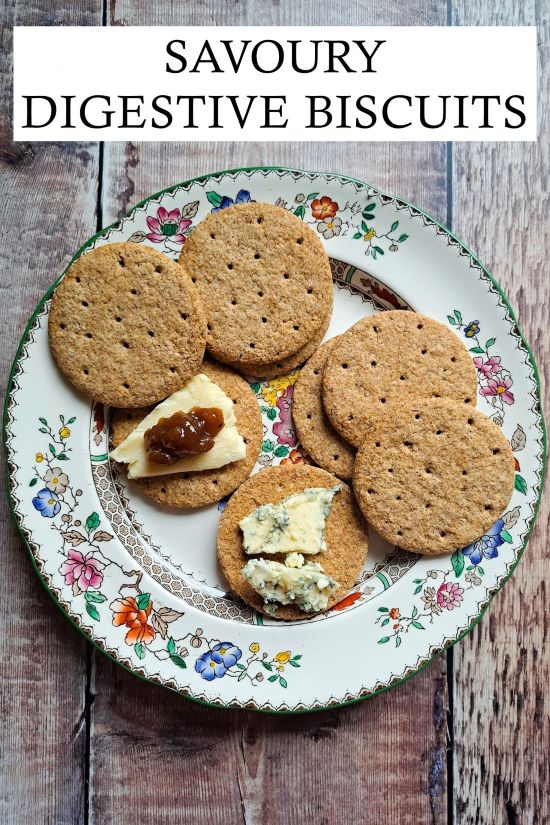
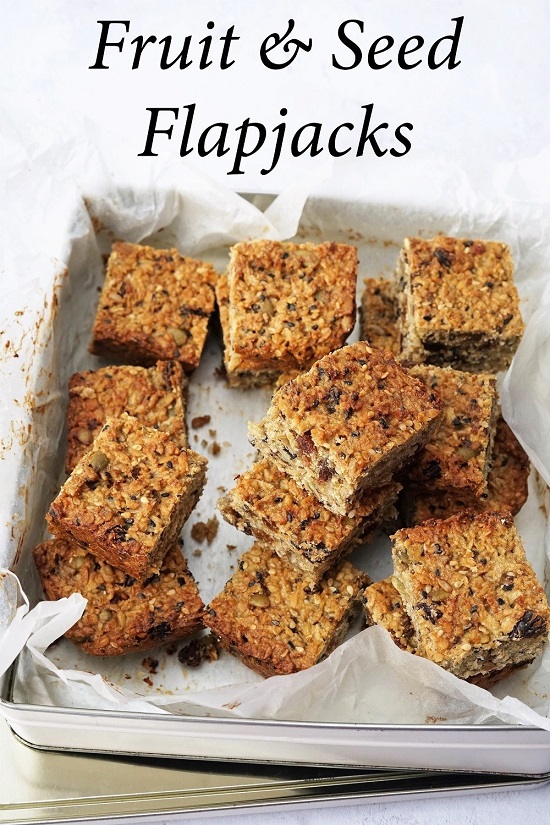
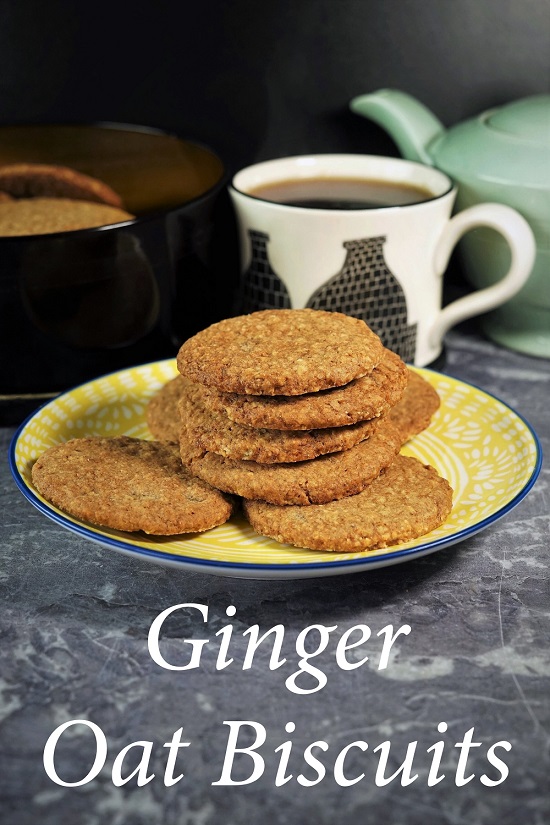
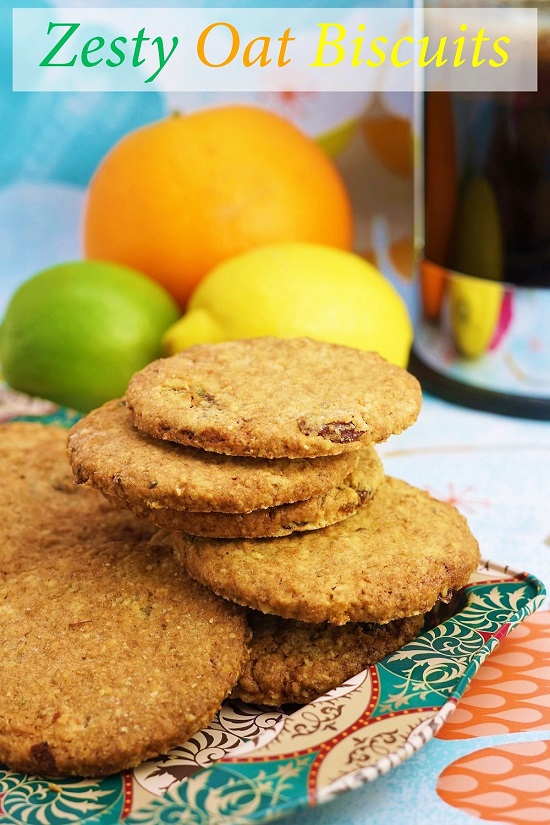
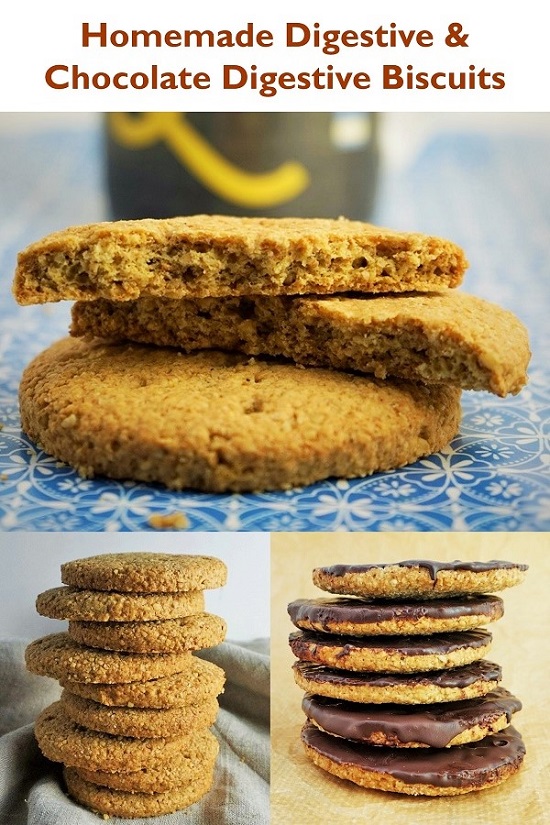
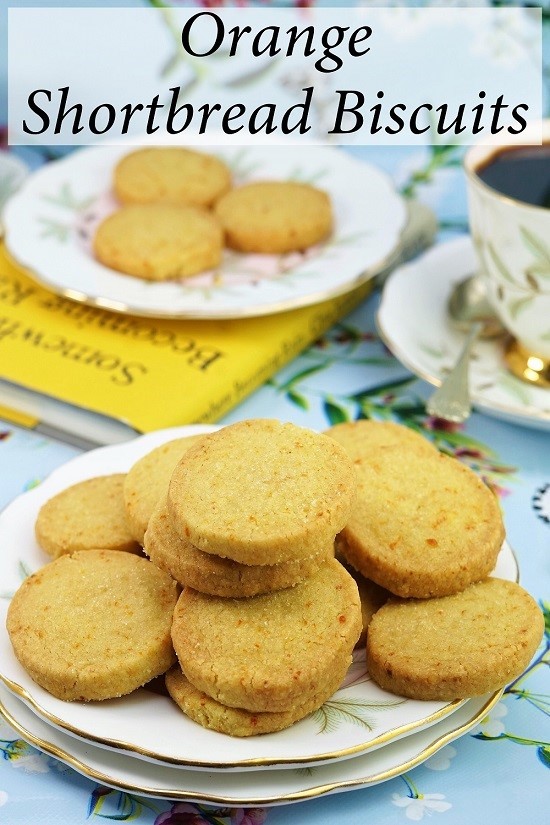
I came across your recipes when searching for an oatcake recipe, but thought I’d cook these first as they sounded so good and I wasn’t disappointed. Will be making them again as they are so much nicer than bought ones.
That’s lovely to hear Maggie, thank you!
I made it in my college for our project. the result was absolutely good about these oatcakes. i just loved it .
Fantastic!
Just love making these fruit seed oat cakes they are always eaten in a flash taste ,today i i added some mixed spice tasted good also I love moorlands eater recipes but i fave not received any news letter since February hope all is well there regards Bryan
Hi Bryan, many thanks for more lovely feedback on my recipes.
I’m afraid I had to discontinue my mailing list. The fees were increased dramatically to such a level that it just wasn’t economically feasible for a small blog like mine. I’d like to reinstate a mailing list at some point but have yet to find anything suitable.
Thanks again for your always encouraging comments. Best wishes, Lynne.
UPDATE: You can now subscribe to my newsletter to get my latest recipes: https://moorlandseater.substack.com/
My first attempt. Pleased with the result. Not overly sweet. As I didn’t have currants used mixed dried fruit that contained currants.
As I don’t like big currants sticking out of biscuits or buns as they tend to burn I zapped the mixed fruit, mixed seeds with a little wholemeal flour. Makes it much smaller. If you don’t add the flour it goes into a big lump.
Can think of a few other tweaks. But that is just me. Just go with what has been carefully provided and you will do ok.
Good well explained recipe.
Thanks for your feedback, Tom. Burnt currants sticking out is my pet hate too and you have an ingenious way of avoiding them! I usually just remove any when stamping out the oatcakes 🙂